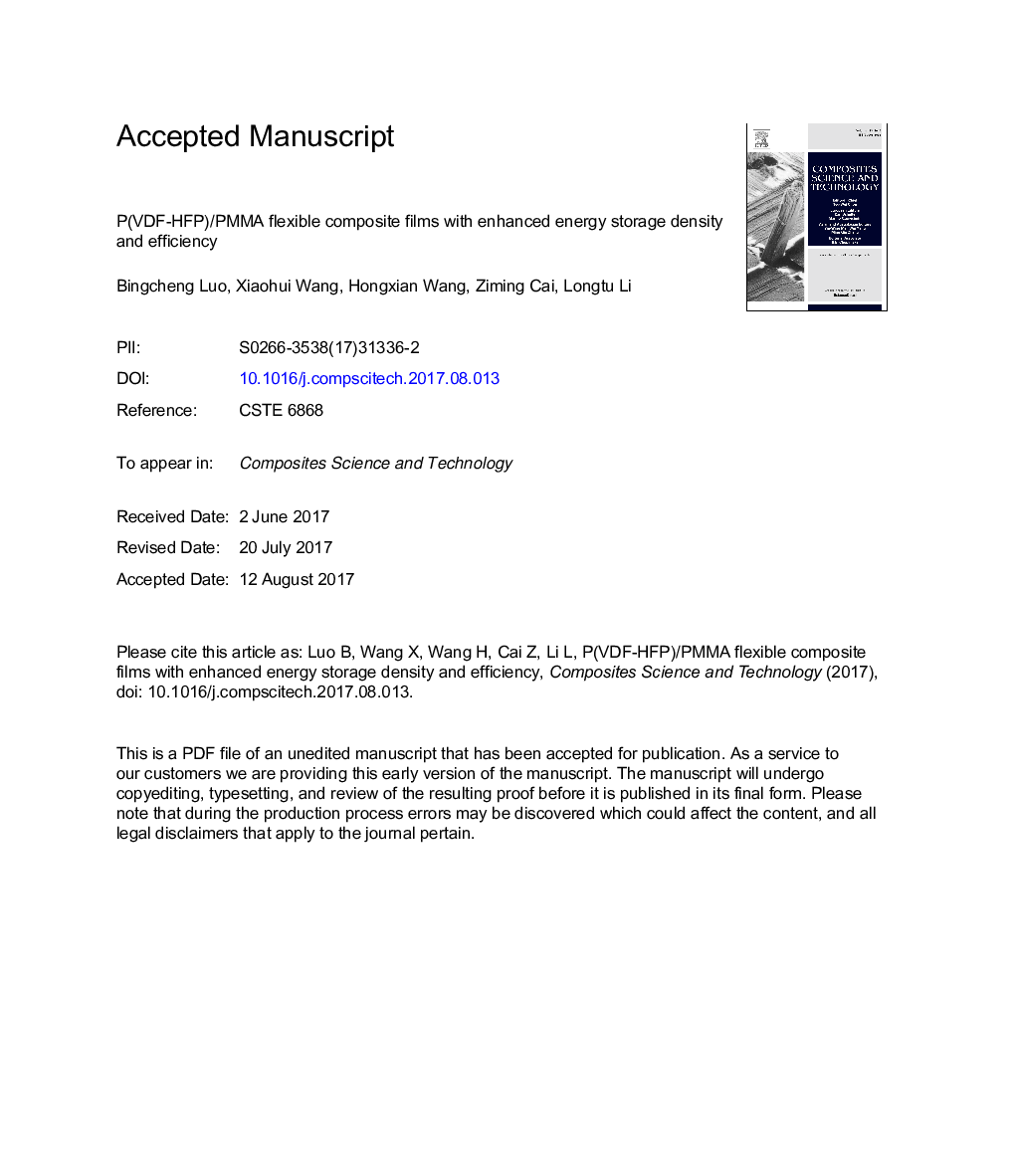| Article ID | Journal | Published Year | Pages | File Type |
|---|---|---|---|---|
| 5022285 | Composites Science and Technology | 2017 | 30 Pages |
Abstract
P(VDF-HFP)/PMMA composite films were fabricated using a blending and hot-molding method and investigated using both experimental and theoretical methods. The extended Flory-Huggins model were adopted to study the Gibbs energy, miscibility, and phase composition of binary mixture, and results showed favorable interactions and compatibility between P(VDF-HFP) and PMMA. The dielectric constant and loss of blend films were reduced compared to pristine films. The ferroelectric hysteresis loops of blend films are much slimmer than that of pristine P(VDF-HFP) films. The discharged energy density of 11.2 J/cm3 with the efficiency of 85.8% was obtained in the P(VDF-HFP)/PMMA blend films with 42.6 vol% PMMA at the electric field of 475 MV/m. The discharged energy density of blend film is 2.6 times of that of pristine film, while the energy storage efficiency is 2.07 times higher than that of pristine film. The origin of enhancement in the dielectric energy storage properties were analyzed using Fourier transform infrared spectra and atomistic simulation. FT-IR results showed γ-phase of P(VDF-HFP) was induced in blend films with a relative amount of 93.6%, comparing with the pristine P(VDF-HFP) films. The van der Waals forces and hydrogen bonding at the interface and the chain entanglement were responsible for the miscibility and stabilization of γ-phase, strengthening the energy storage properties.
Related Topics
Physical Sciences and Engineering
Engineering
Engineering (General)
Authors
Bingcheng Luo, Xiaohui Wang, Hongxian Wang, Ziming Cai, Longtu Li,
